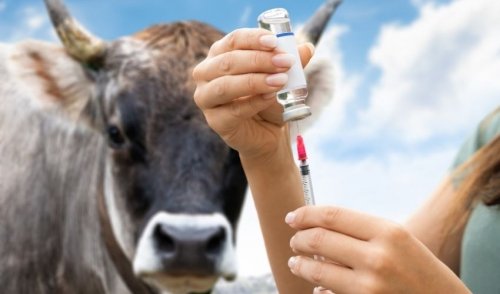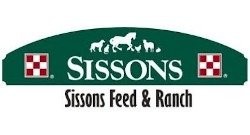
Boost Your Cattle Respiratory Vaccine Program
Bovine respiratory disease (BRD) and other respiratory ailments can be costly, deadly infections in any cattle herd, but if you boost your cattle respiratory vaccine program, you can minimize the risks and keep your animals healthy and productive.
About Bovine Respiratory Disease
Bovine respiratory disease is a complex ailment that includes a bacterial infection, underlying viral infection, and stress trigger. Together, these components interact to cause pneumonia in calves, but because the exact agents that cause BRD can vary and the symptoms may not be immediately distinct, it can be challenging to diagnose and treat. As the condition advances both the viral infection and the bacterial infection multiply, often when the animal is already stressed and vulnerable from excessive handling or transportation. Because this disease is often associated with calf sales and transport, it may be referred to as “shipping disease” but there are several similar diseases that may also be given that general name.
A variety of symptoms may be present with bovine respiratory disease, including:
- Lethargy
- Fever
- Coughing
- Appetite loss
- Nasal discharge
- Breathing difficulties
- Social isolation
Other respiratory illnesses, including parainfluenza as well as infectious bovine rhinotracheitis (IBR) can also have similar symptoms. Fortunately, a thorough respiratory vaccine program can protect your cattle from many of these ailments and minimize the risk of severe problems and fatalities.
Boosting Your Respiratory Vaccine Program to Combat BRD
While it can be difficult to completely eliminate respiratory ailments in calves, a thoughtful vaccination program can greatly reduce the risk and mitigate the numerous respiratory diseases calves can be susceptible to. To boost your respiratory vaccine program…
- Choose the correct vaccines. Which vaccines are most effective on which calves will depend on the cattle breed, the animals’ overall condition and age, and what diseases are most prevalent locally. Consult with your veterinarian for the best options suitable for your herd, as well as whether single vaccinations or combination dosages are most appropriate.
- Time vaccines appropriately. The best timing for either single or combination vaccinations will depend on the vaccines administered, the overall health and age of the calves, and the presence of diseases in local climates and populations. Ideally, vaccines ought to be administered prior to shipping, before that stress will impact calves’ hardiness and immune response.
- Use proper dosages. The amount of dosage will vary for different animals based on weight, age, and health, as well as the type of vaccine administered. Improper dosages can render the vaccine ineffective and make animals more susceptible to infection because other treatments may assume the vaccine is fully in place when it is not correctly protecting the animal.
- Store vaccines appropriately. Vaccines can lose their potency quickly if they are stored improperly, such as if they are exposed to bright sunlight or subject to freezing temperatures. Some live vaccine cultures can even become ineffective in just a few hours. Be sure to use vaccines within the appropriate time frame and store them safely to maintain their effectiveness.
- Administer antibiotics simultaneously. Because BRD is a complex interaction between both viral and bacterial agents, it can be helpful to administer antibiotics to calves at the same time as vaccinations, to ensure that both agents are minimized. Antibiotics are available in a variety of forms, including those with and without daily dosing requirements.
Taking multiple steps to boost your respiratory vaccine program can be effective at better protecting calves and lowering the risk of devastating BRD outbreaks.
Keeping Your Cattle Healthy
Calves that are overall healthier will have stronger immune systems and be better able to withstand both viral and bacterial infections that cause respiratory illnesses. In addition to a strong and thoughtful vaccine program…
- Offer your calves the best possible nutrition. The better the animals’ overall condition, the better they will withstand any diseases.
- Provide plentiful, clean water at all times. Dehydrated animals are more susceptible to diseases, and dirty water can easily transmit illnesses to an entire herd.
- Clean feeding and watering equipment regularly using proper sanitizing techniques. This will help prevent incidental disease transmission.
- Offer suitable shelter from inclement weather, including wind, rain, and cold. Shelter should be adequate for all animals, and free from incidental drafts or leaks.
- Minimize stress around the calves, including unknown noises, unnecessary handling, predators, and other stressors. Excessive stress can easily weaken immune systems.
Above all, stay alert to your herd and be on the lookout for any signs of discomfort or illness. When problems are spotted right away, they are much easier to treat and contagion can be minimized, protecting your animals and ensuring a healthier herd.
